Wedding days are filled with love, laughter, and cherished memories. Capturing these events in a cinematic wedding video preserves these memories and ensures they can be relived and shared with loved ones.
Unlike traditional wedding videos, which document events as they unfold, cinematic videos are designed to feel like short films. They tell a story, blending emotions with creativity to create lasting memories. Hence, hiring a professional creator or videographer is important as they have the experience, tools, and creative vision to make a visually stunning and emotional film that truly captures the essence of the special day.
You’re not a professional videographer, you don’t have much experience, or you’re simply looking to refine your technique. No worries; this article will show you how to create romantic videos from weddings with a cinematic feel.
In this article
Part 1: Things You Need to Know Before Creating Cinematic Wedding Videos
Creating a cinema story out of wedding films needs proper planning and preparations to truly reflects the couple’s unique story. Here are pre-production tips to guide you.
Pre-shoot consultations
Schedule a consultation with the couple to discuss their cinematic wedding video expectations:
- The preferred video style — romantic, modern, elegant, or dramatic
- The special moments of the event they want to be highlighted.
- Specific shots they envision.
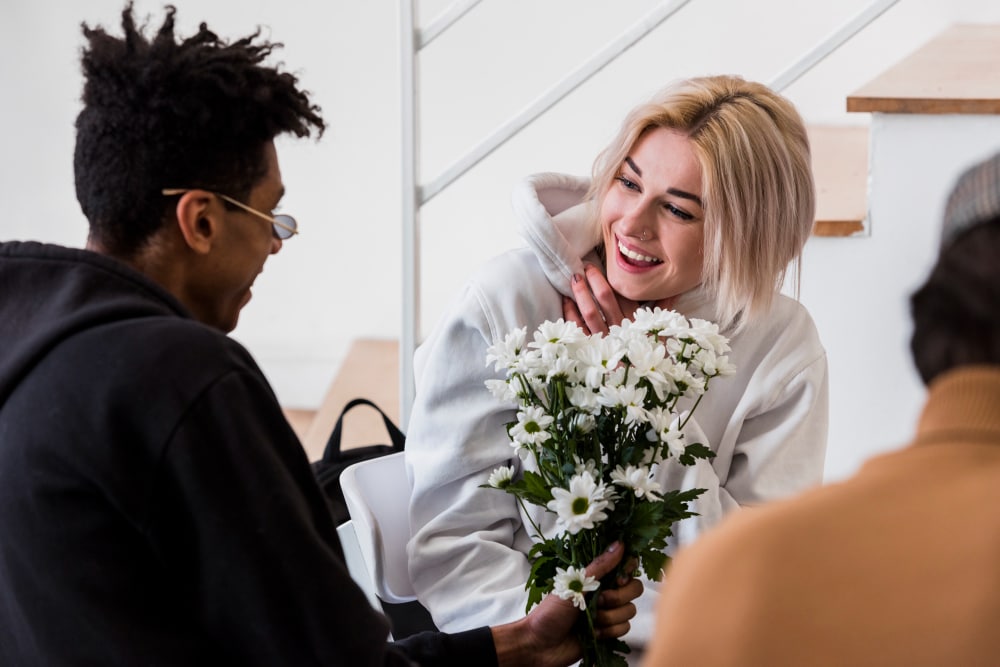
Create a love story
Think of the video as a visual love story. Use the couple’s unique moments—like how they met or their proposal story—to create a narrative. Incorporate these details through voiceovers, interviews, or text overlays.
Scout the Wedding venue
Visit the venue in advance to identify attractive spots for critical shots, such as the first look and the couple's portraits. You anticipate challenges, such as limited space, and find solutions to them before the event.

Lighting setup
Lighting plays an important role in giving your wedding video a cinematic feel.
- For outdoor weddings, use natural light and pick your spots and angles according to the sun’s direction. Use reflectors and diffusers to manage harsh sunlight and reduce shadows.
- For indoor events, use large windows for natural light and add soft, diffused artificial lighting.
- For nighttime shots: Use ambient lighting like fairy lights, candles, or lanterns.
Essential Equipment
- Camera and Lenses. A budget-friendly 50mm f/1.8 lens, zoom lenses, and wide-angle lenses
- Stabilization Tools like tripods and monopods
- External mics like shotgun mics and lavalier mics (also called lapel mics)
- Portable lighting gear, adjustable LED lights, and ring light
- Drone
- Spare batteries and memory cards
Part 2: How Can You Get the Perfect Cinematic Wedding Film
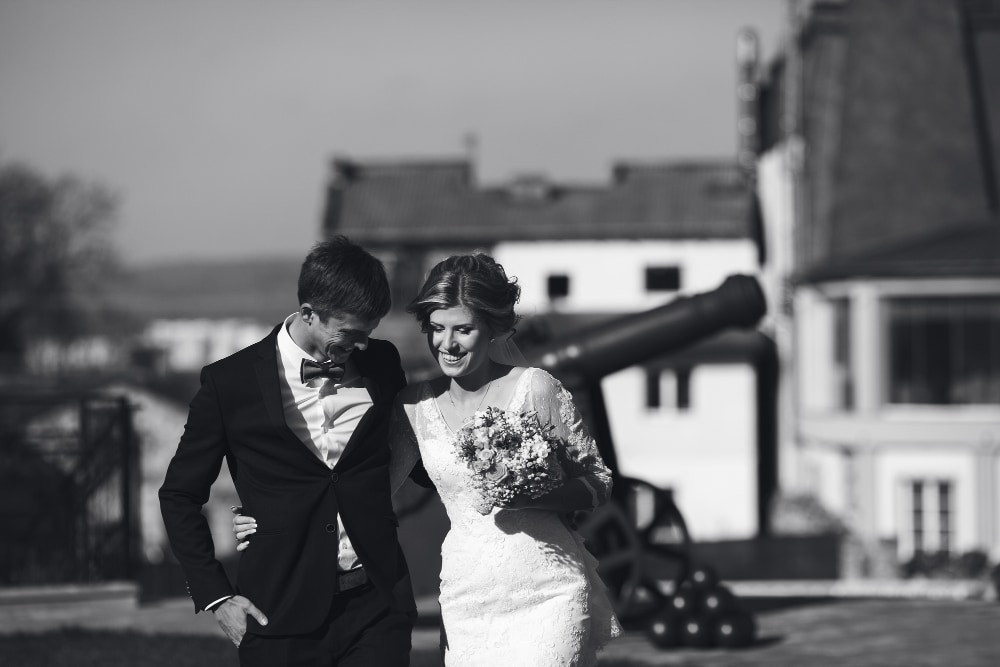
Here is the process of creating cinematic wedding films consisting of three parts: shooting, sound design, and post-production.
Shooting Techniques for Cinematic Results
Here are some techniques, guides, and recommended angles for shooting your wedding video.
Plan the Perfect Shots
Properly planning your shots is an intentional move to capture every important, emotional, and romantic moment in the event. It reduces the risk of missed opportunities and rushed footage. Coordinate with the wedding planner to know when key moments will occur, like the vows, first kiss, or first dance.
Shot Ideas and Angles
Incorporate a mix of these shots and angles to create a cinematic video for your wedding.
- Establishing shots:These are wide-angle shots of the venue and its surroundings to set the scene. You can take a drone shot of the venue and landscape or a wide shot of the venue setup before the guests arrive.
- Bride and Groom prep:Capture the bride and groom as they prepare. For instance, take close-up shots of hands fastening jewelry or tying a tie, etc.
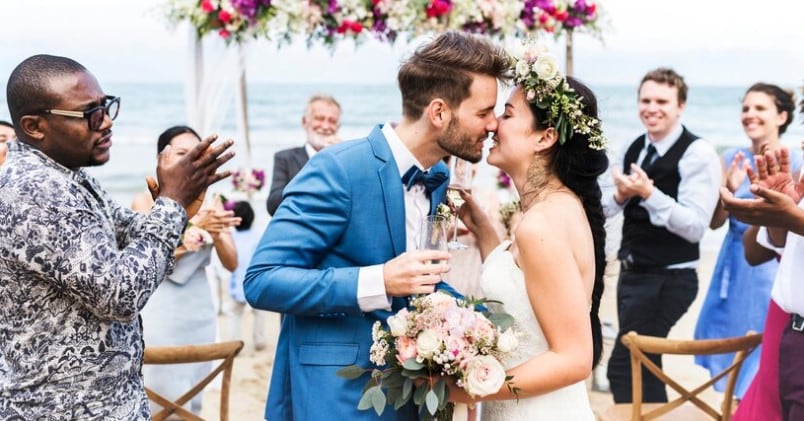
- Couple’s first look: Capture the emotional moment when the couple sees each other all dressed up for the first time.
- Vows and ceremony highlights: Don’t skip important highlights of the wedding ceremony such as the vows, ring exchange, first kiss, etc.
- Guests reactions:Capture candid moments of family and friends smiling, laughing, or tearing up.
- Couple’s portraits:Capture posed and unposed shots of the couple. Take shots of the couple walking hand-in-hand, a shared glance, a happy smile, or a gentle kiss.
- Reception details and decoration: capture the reception decor, table settings, and overall venue ambiance. Take shots of the floral arrangements, rings, and table arrangements.
- Dance floor moments:Take videos of the couple’s first dance with the crowd in the background. Depending on the style of your wedding video, capture the energy and joy of the group dances with close-up shots of laughter and twirling dresses.
Sound Design for Cinematic Wedding Films
In cinematic wedding videos, good-quality audio can immerse viewers in the couple’s love story. The first step to getting the perfect sound design is using the right recording equipment such as the ones recommended in Part 1.
Choose soft instrumentals for prep shots and romantic tracks for the vows. Mount on-camera mics and ensure it aligns with the sound source, for backup. Use handheld mics for interviews and field recorders for natural sound. Record sounds during quieter moments to avoid interference from other noises.
Cinematic Wedding Video Editing & Post-Production
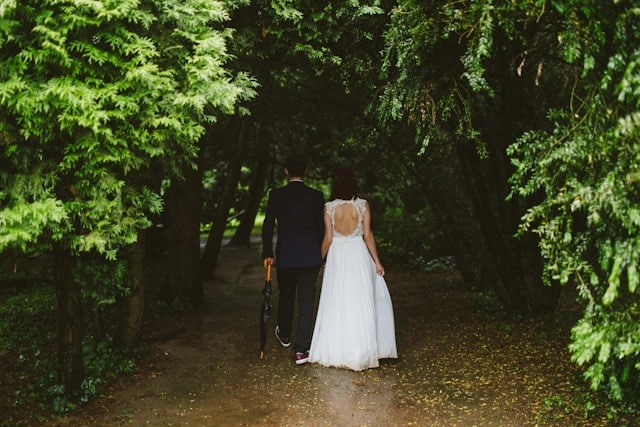
After all is done, effective editing transforms these raw clips and brings the entire video together to give a cinematic film.
So for professional results, use video editing tools like Wondershare Filmora. When color grading, use warm tones warm tones for romance-themed videos and cool tones for elegance. Experiment with different color grades, contrast, and saturation until you get your desired result. See Part 3 on how to edit your rough cuts with Filmora.
Part 3: Stepwise Process to Create Different Cinematic Wedding Films
Creating a cinematic wedding video requires creativity, storytelling, and video manipulation skills. After planning and executing the perfect shots and picking the right sounds, you need the right tool to put everything together and get a video with a wedding cinematic feel.
Filmora is a video and sound editing tool that allows videographers, creators, and editors to create stunning cinematic visuals, regardless of experience level. Follow these steps to create a cinematic wedding film that tells your clients’ love story.
- Vast video/audio effects and creative assets.
- Powerful AI for effortless content creation.
- Intuitive, professional yet beginner-friendly.
- Works on Mac, Windows, iOS, and Android.
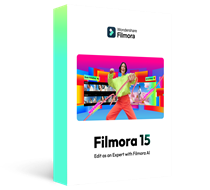
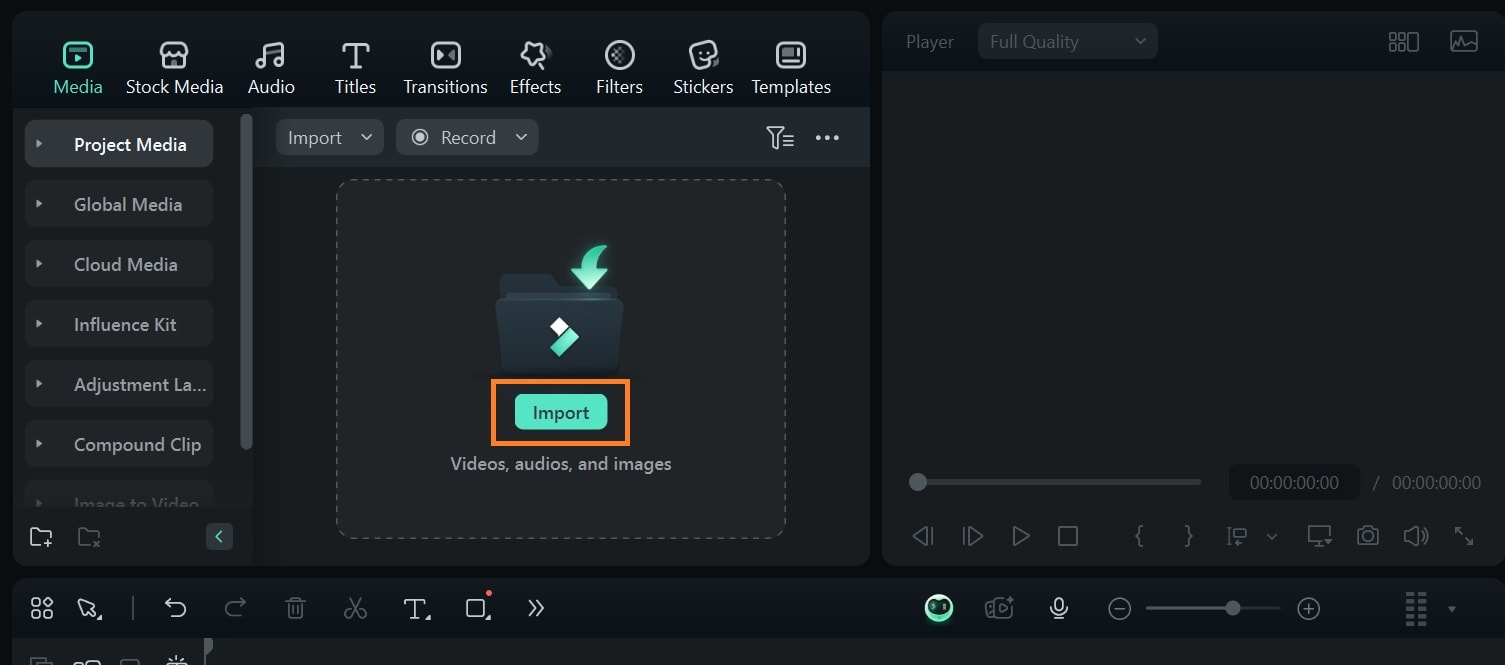
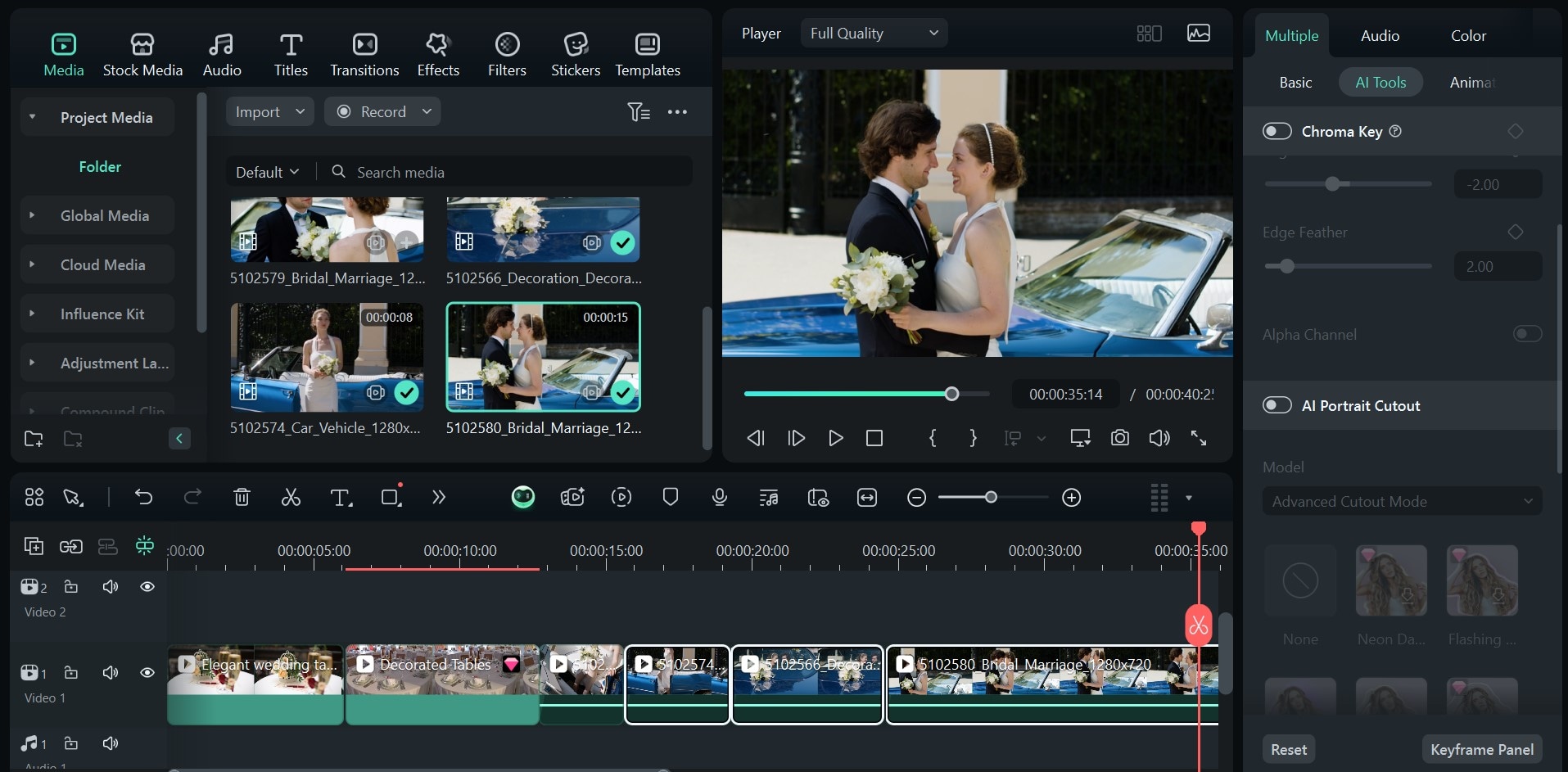
To add transitions, go to Transitions > Transition on the toolbar. Select any transition, download it, and drag it to the timeline.
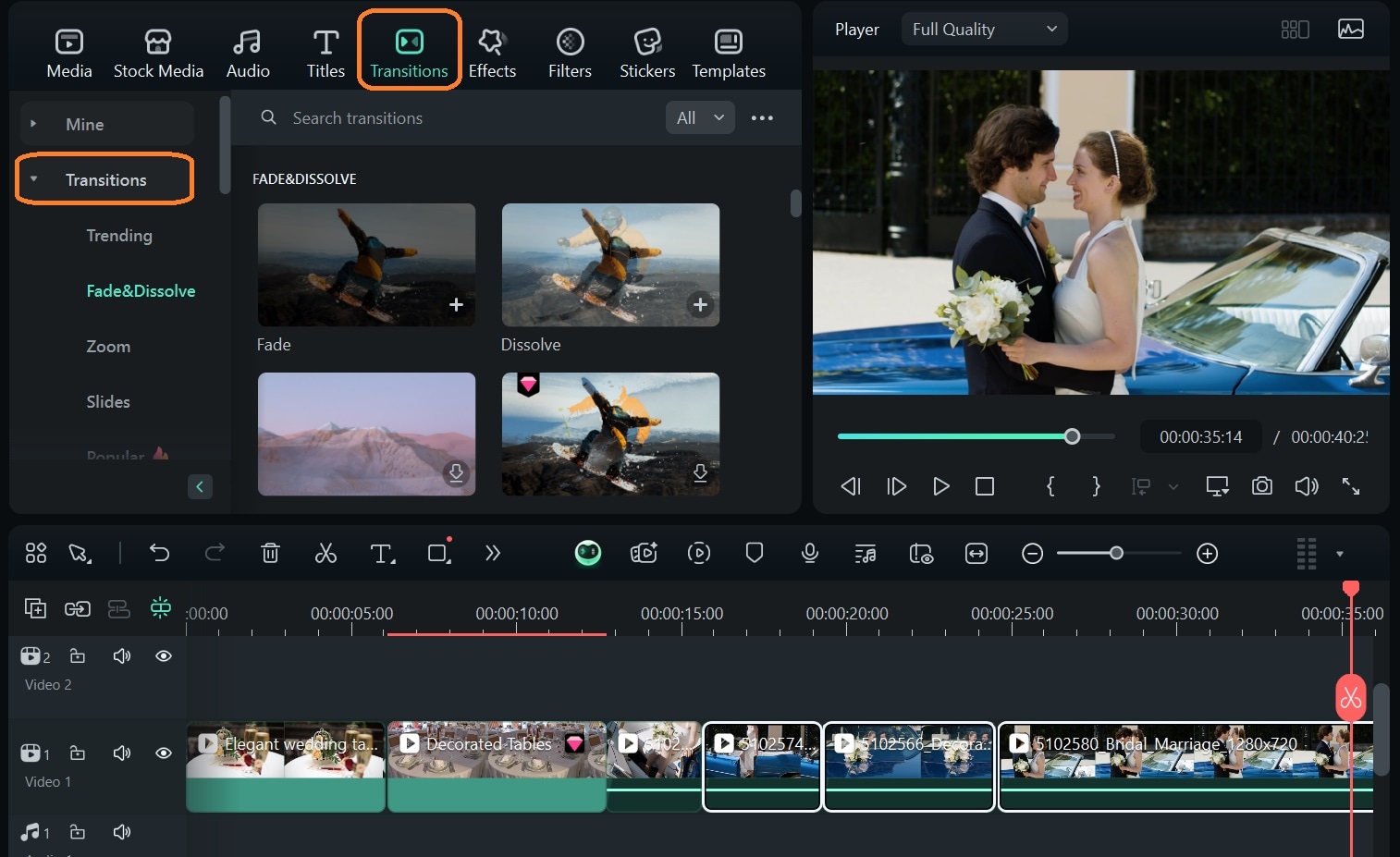
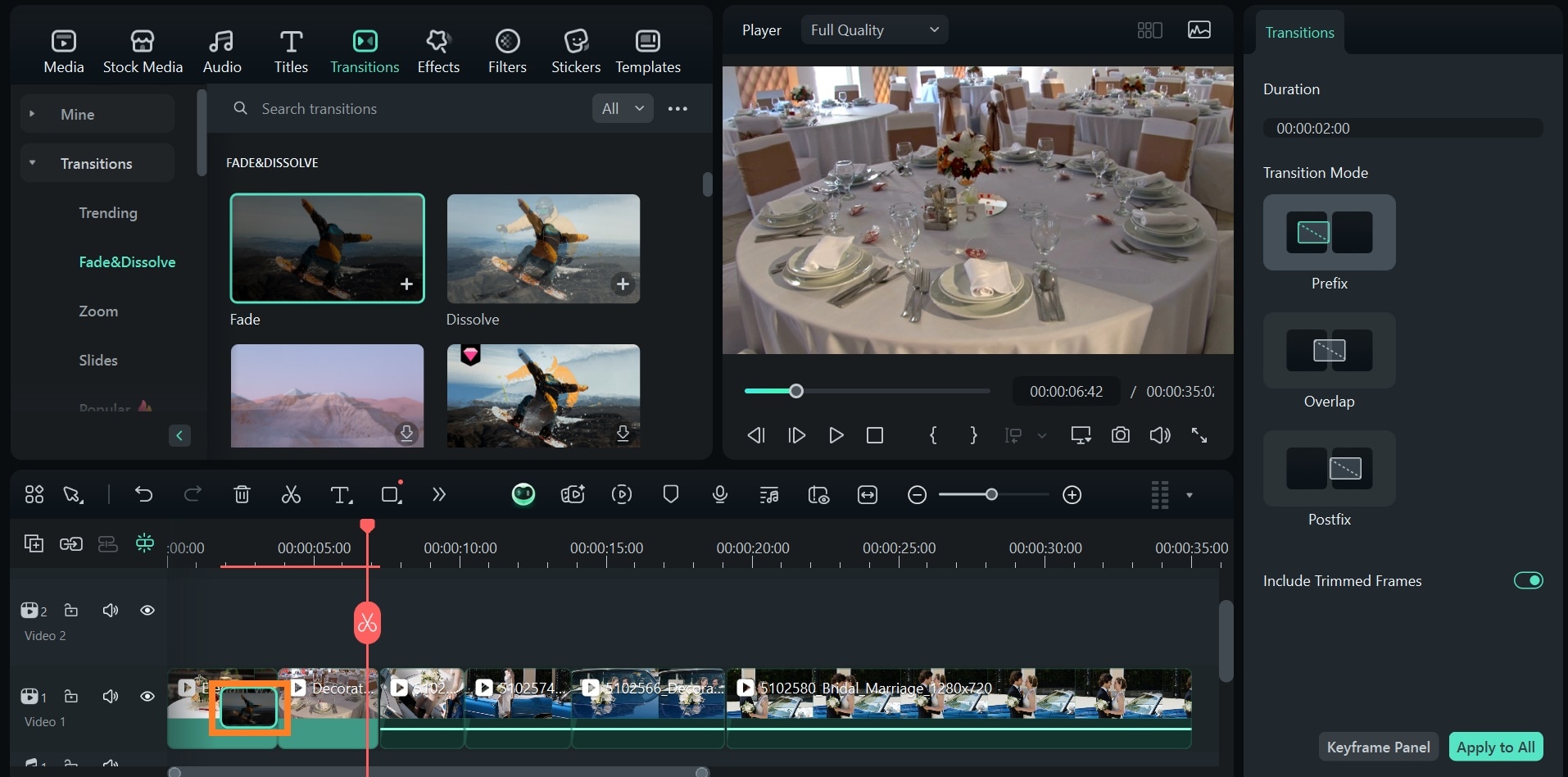
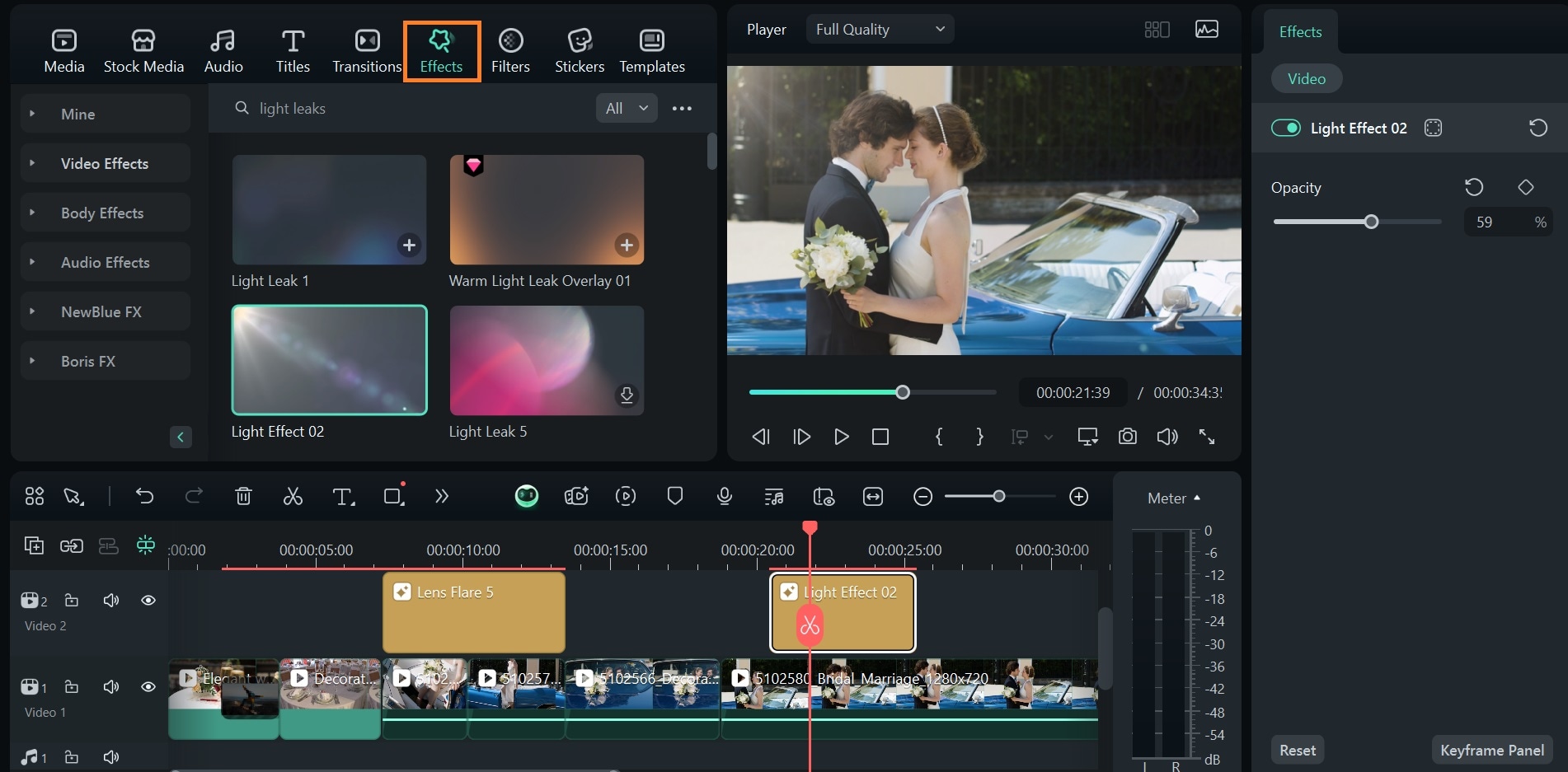
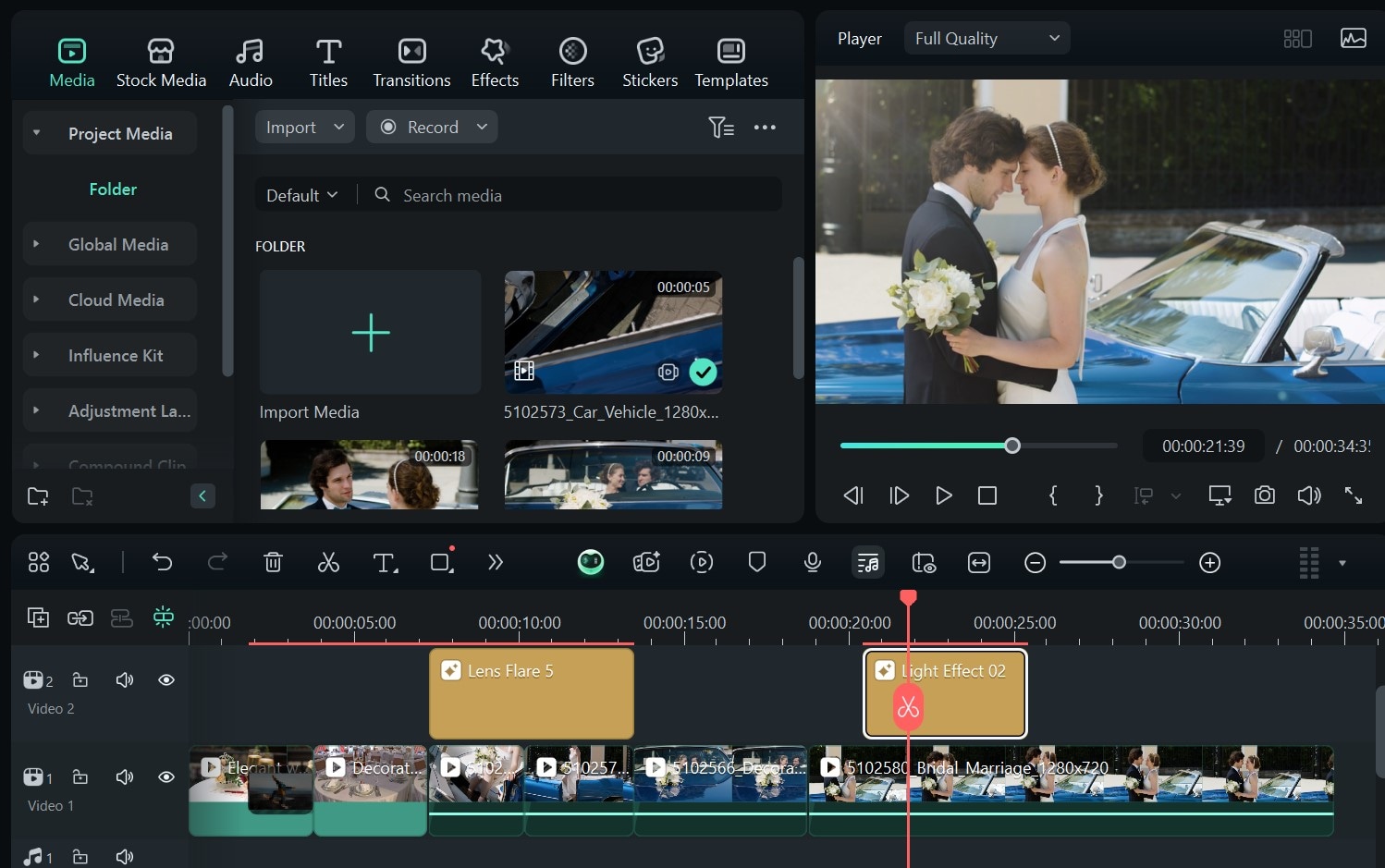
Alternatively, check out Filmora’s audio library for suitable soundtracks. Go to Audio > Music on the toolbar and type Wedding into the search bar. Go through the results and ensure the sounds suit each emotion of your video—whether emotional, happy, romantic, etc.
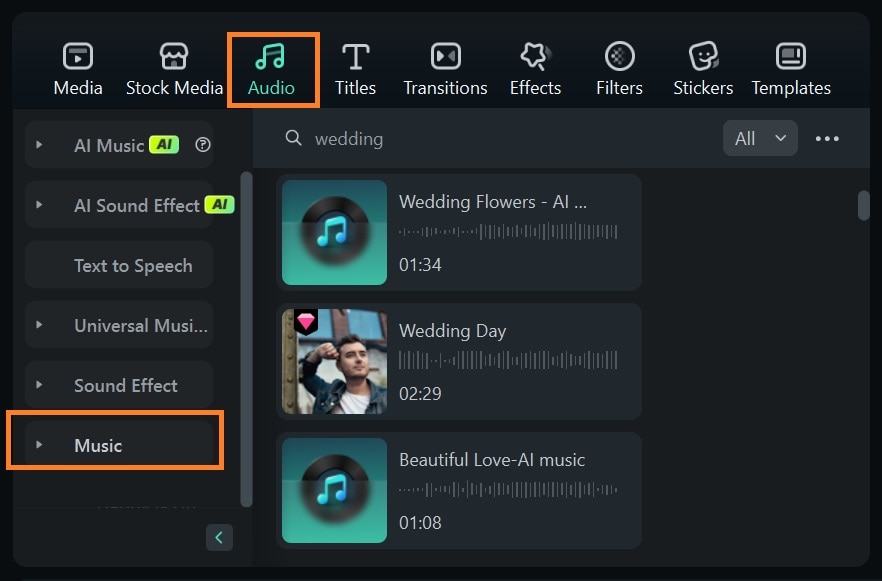
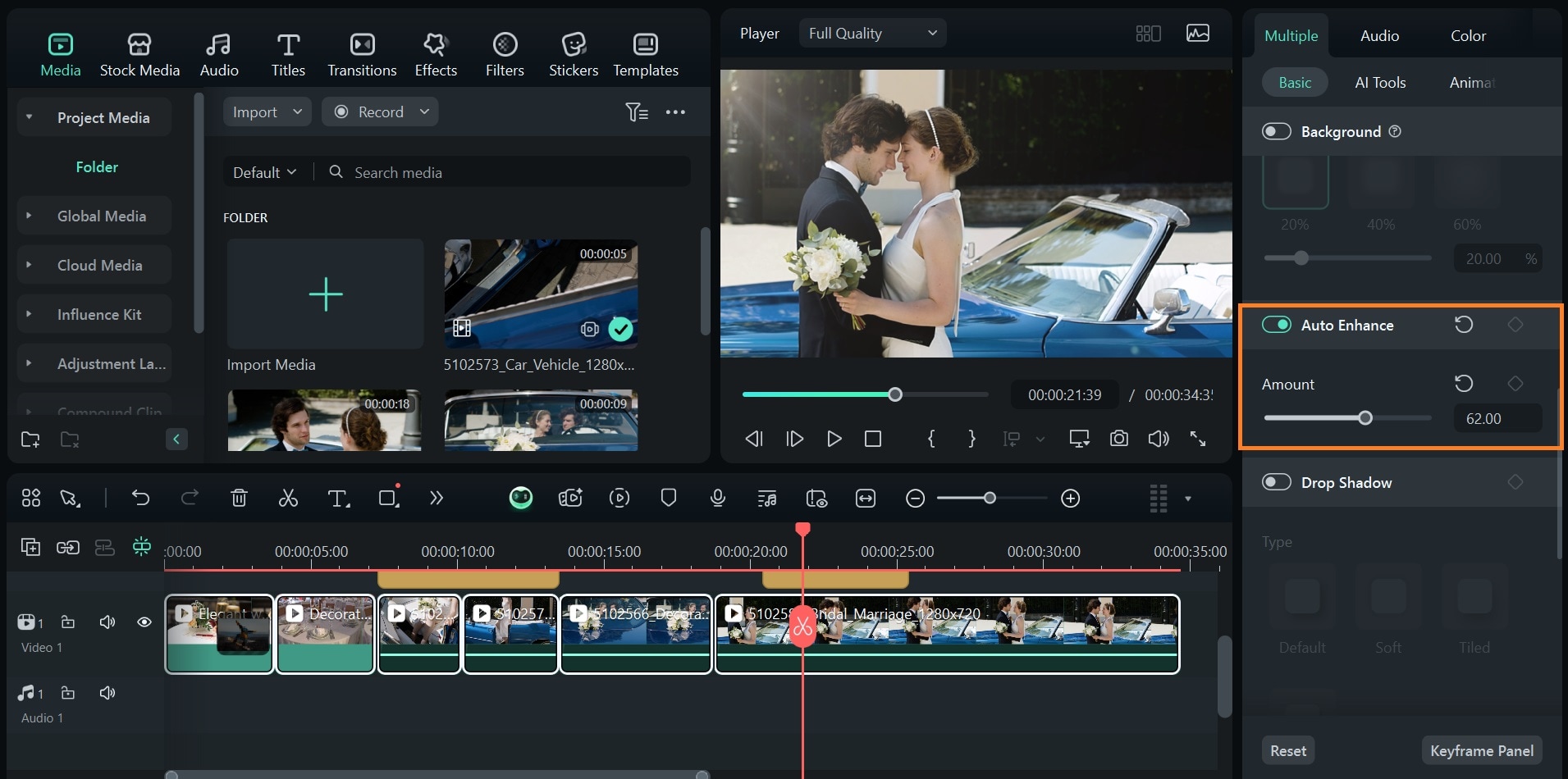
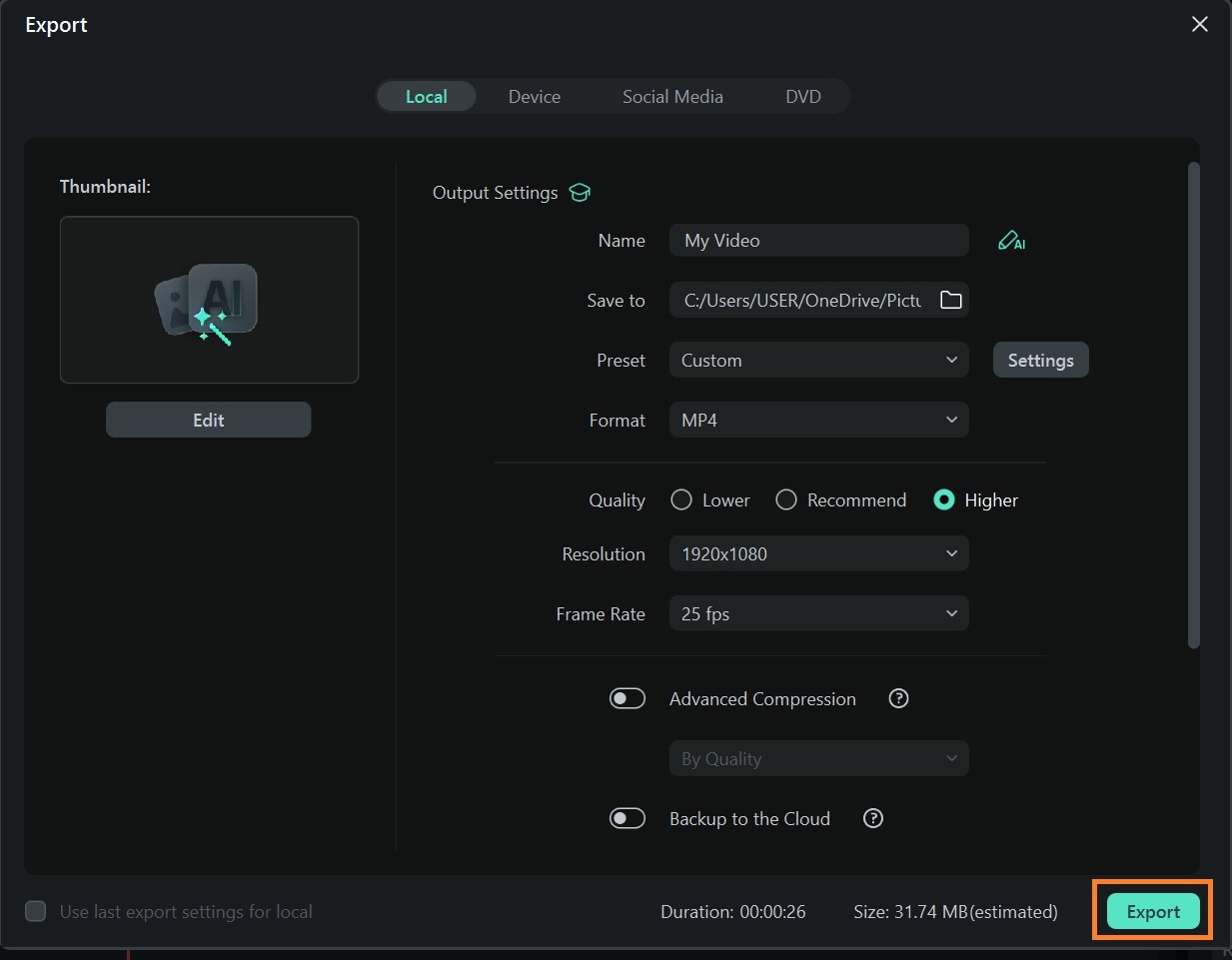
How to Create a Wedding Slideshow with Your Wedding Photos on Filmora
You can create a wedding slideshow with wedding photos using Filmora. The process is similar to creating a cinematic video for a wedding, but without all the planning that comes with it. Another difference is that you’re using mostly photos.
Import your pictures to Filmora. Add transitions and music depending on the vibe you want and export your high-quality slideshow.

How to Create Collage Videos with Your Wedding Videos on Filmora
Another creative way to use your wedding videos is to create a collage video using Filmora’s split-screen feature.
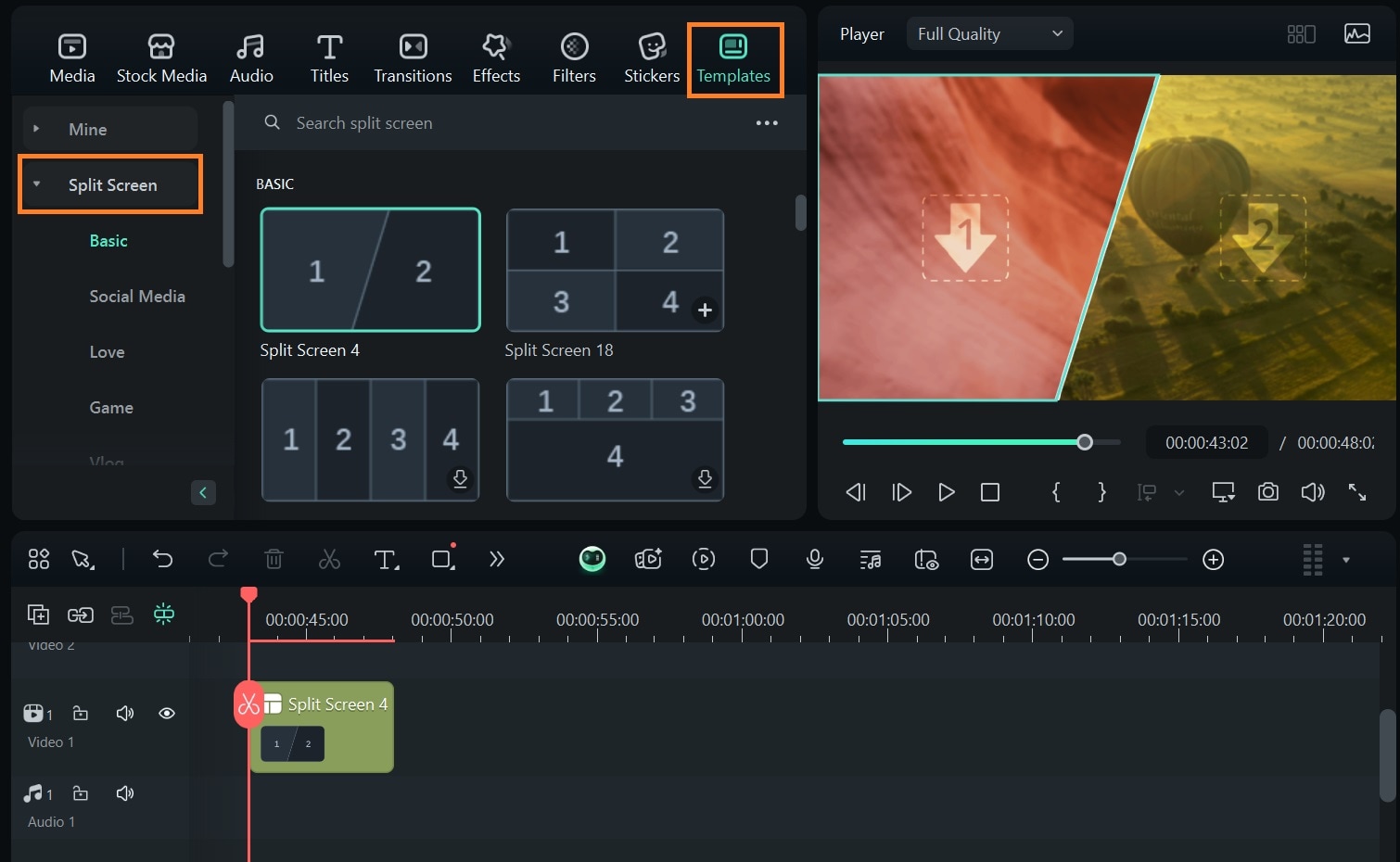
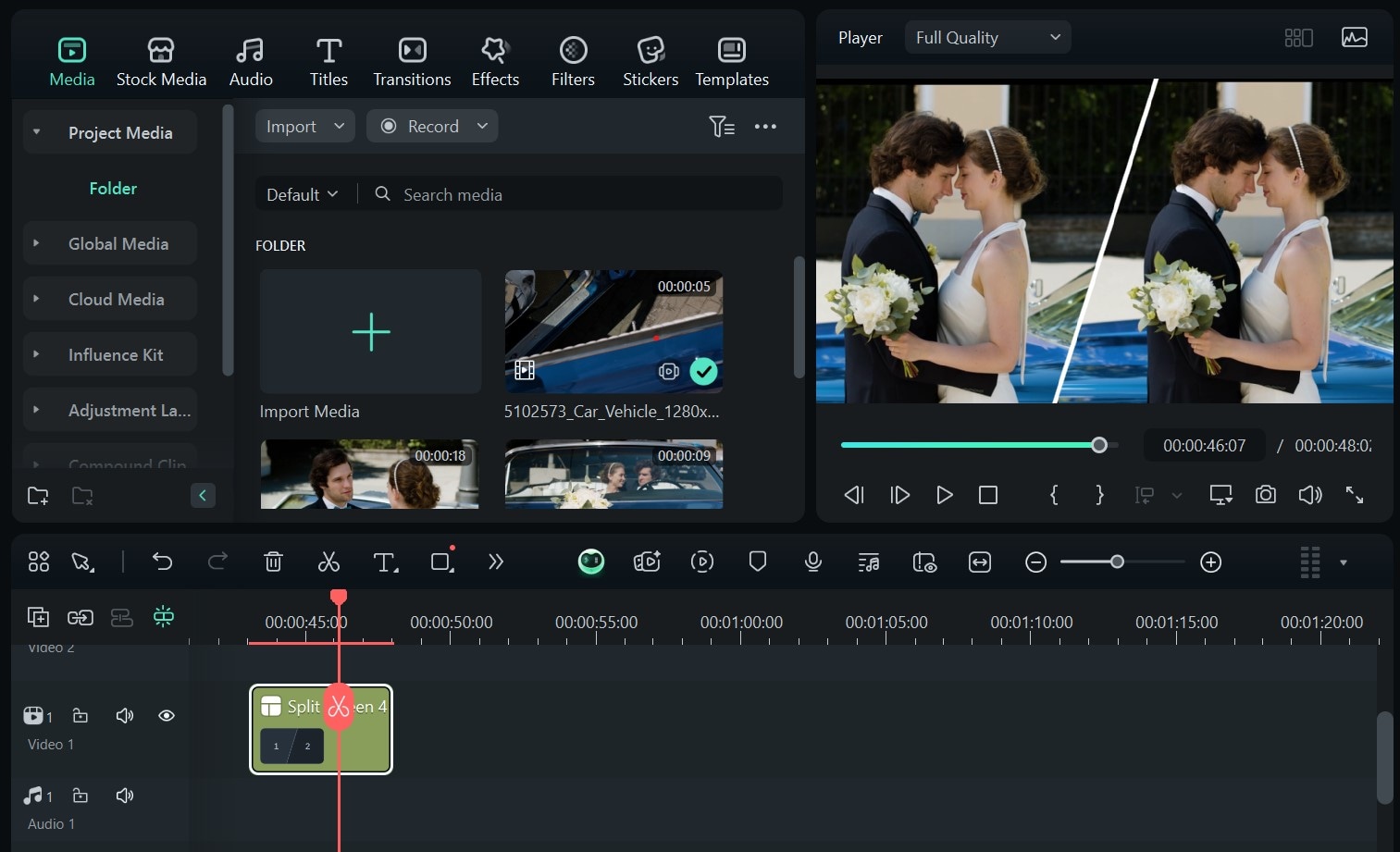
Conclusion
A wedding day is one of the most significant milestones in a couple’s life, and capturing its essence requires more than just documenting the event. Understanding the couple’s preferences, using the right equipment, applying shooting techniques alongside a carefully planned sound design, and using the right editing software can give you a cinematic wedding video that feels straight out of a movie.
Use Filmora to create romantic wedding videos, slideshows, and video collages that tell a beautiful love story. With Filmora, you can turn a regular event into a timeless memory.





